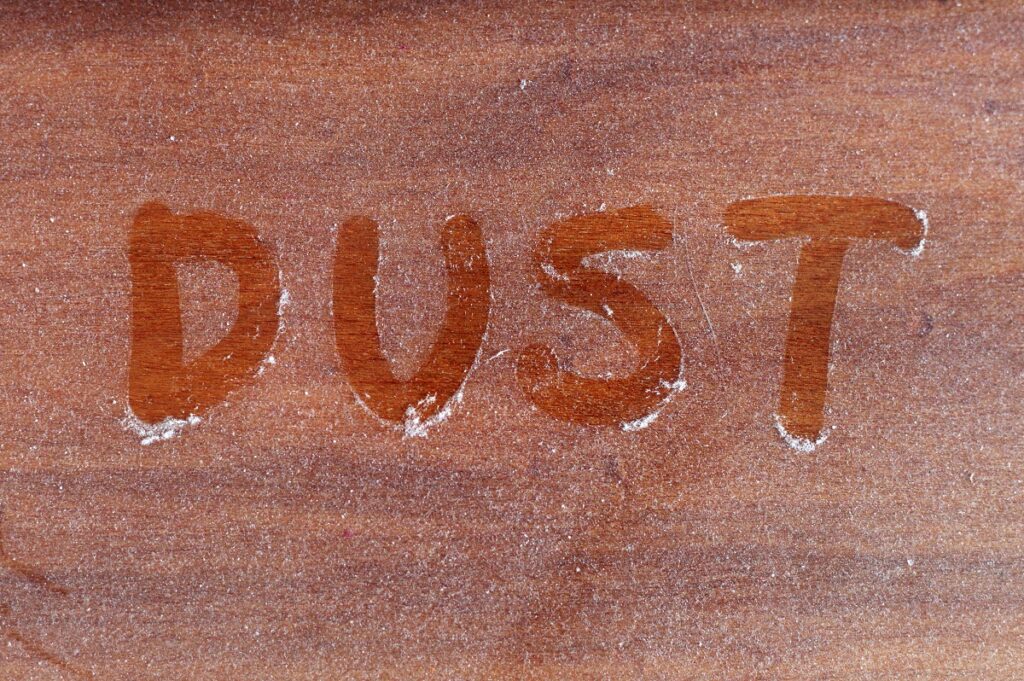Disclaimer: Curate Gifts. This site provides fashion and lifestyle content for informational purposes only.
- Dust is a mix of elements that can enter our homes from various sources and cause health risks.
- Clogged air conditioning and heating system filters can lead to higher utility bills, more frequent maintenance, and shortened appliance lifespan.
- Effective ways to reduce dust levels include keeping fabrics clean, starting with the source, removing dust with the right tools, cleaning from top to bottom, controlling clutter, and keeping windows and doors closed.
- By implementing these tips, you can reduce the impact of dust on your home and enjoy a healthier living space.
Did you know a typical household generates up to 40 pounds of dust annually? Dust may seem like a harmless, simple nuisance, but it can significantly impact your health, comfort, and even your home appliances. Here’s what you need to know in the world of dust and explore its various effects on people’s lives, giving you the knowledge to take actionable steps to minimize its impact on your health and well-being.
What is Dust, and Where Does It Come From?
Dust is a complex mixture of dead skin cells, hair, pet dander, soil, pollen, mold spores, fibers from clothing and furniture, and microscopic mites that feed on it. Dust enters our homes from various sources, including indoor activities, outdoor air, and tracking from shoes. While eliminating dust is impossible, understanding and controlling its sources can help you manage its impact on your life.
Health Impacts of Dust
Exposure to dust can lead to a wide range of health issues, particularly for those with existing respiratory problems or allergies. Inhaling dust particles can cause respiratory irritation and asthma attacks, while the microscopic mites in household dust can set off allergic reactions. Common symptoms of dust allergies include sneezing, runny or stuffy nose, itchy eyes, and eczema. Prolonged exposure to a dusty environment may also cause more severe conditions, such as chronic obstructive pulmonary disease (COPD).

Dust and Your Home Appliances
Dust can clog the filters in your air conditioning and heating systems, decreasing their efficiency and increasing energy consumption. This can lead to higher utility bills, frequent maintenance, and a shorter appliance lifespan. Moreover, excess dust can also damage and reduce the efficiency of electronic devices, such as laptops, TVs, and gaming consoles by clogging vents and impeding air circulation.
Effective Ways to Reduce Dust Levels in Your Home
The key to controlling dust in your home is knowledge. Here are some effective ways you can reduce dust in your home:
Keep Fabric Clean
Dust can cling to fabrics, such as curtains and upholstered furniture, so vacuum them regularly. Use a damp cloth to wipe down surfaces and remove dust collected on them. Hiring a local laundry and pickup delivery service to help you out is also good. They can clean your clothes and other fabrics thoroughly and safely.
Start with the Source
One of the primary sources of dust in your home is your heating, ventilation, and air conditioning (HVAC) system. Over time, the filters in your furnace and air conditioner collect dust, which can then be distributed throughout your house. Make sure to regularly clean or replace your HVAC filters, depending on the manufacturer’s recommendations. This simple step can help significantly reduce your home’s dust levels.

Remove Dust with the Right Tools
Not all dusting tools are created equal! When removing dust from surfaces, reach for a microfiber cloth or a dusting mitt. These materials are specially designed to trap dust and prevent it from becoming airborne again. Avoid using feather dusters, as they simply move dust around rather than capture it. When vacuuming, opt for a vacuum with a HEPA filter, which can trap even the smallest dust and debris particles. Don’t forget to clean your vacuum filters regularly as well!
Clean from Top to Bottom
When cleaning your home, always work from the top down. Start by dusting ceiling fans, light fixtures, and crown molding, then work down to table surfaces, baseboards, and floors. This method ensures that any dust knocked loose during the cleaning process will be captured on lower surfaces or floors rather than redistributed throughout the room.
Control Clutter
The more cluttered and crowded your living space is, the more surfaces there are for the dust accumulation. To make cleaning more accessible and practical, try to reduce the number of unnecessary items in your home. Choose easy-to-clean materials for your furniture and flooring, such as leather or wooden furniture, and hard flooring surfaces like laminate, tile, or hardwood. Avoid plush, upholstered furniture and wall-to-wall carpeting, which can act as dust traps.
Finally, try to keep windows and doors closed when you can. This will help reduce dust entering your home from the outdoors. With these tips, you should be able to make a real difference in limiting the impact of dust on your home! Once you reduce the dust levels in your home, you’ll be able to enjoy a healthier, more comfortable living space.

